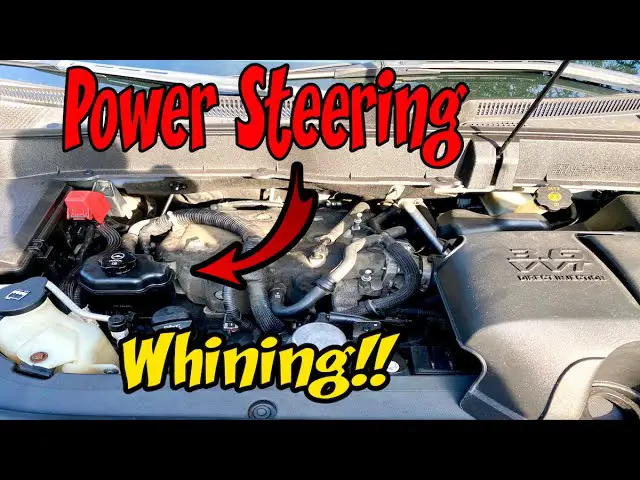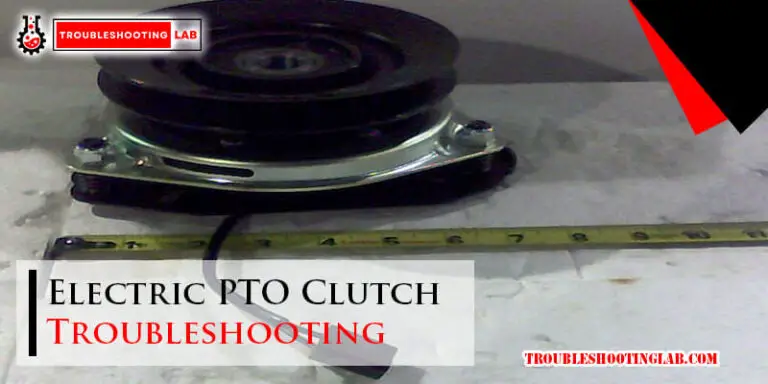Bendix Air Brake Troubleshooting: Expert Tips & Solutions
Struggling with Bendix air brake issues can be frustrating and time-consuming. You might find yourself asking, “Why aren’t my brakes working as they should?”
These problems can compromise your safety and your vehicle’s performance, leaving you feeling uneasy every time you hit the road. But don’t worry; you’re not alone. Many vehicle owners face similar challenges with their Bendix air brakes. Understanding how to troubleshoot these issues is crucial for ensuring your peace of mind and maintaining optimal vehicle function.
In this guide, you’ll discover simple yet effective solutions that can help you get back on track. Are you ready to take control and solve those pesky brake problems once and for all? Dive into our comprehensive troubleshooting guide and regain confidence in your vehicle’s safety and performance.

Credit: mhhauto.com
Common Air Brake Issues
Air brakes are essential for the safety and functionality of heavy-duty vehicles. However, like any mechanical system, they can experience issues that may lead to serious consequences. Understanding common air brake problems can help you prevent accidents and maintain your vehicle effectively. You might have experienced a sudden brake lockup or noticed air leaks, causing your vehicle to lose pressure. These are not just minor inconveniences but warning signs demanding immediate attention. Let’s dive into some of these common issues.
Brake Lockup
Brake lockup is a common problem that can lead to dangerous driving conditions. Imagine driving down a highway and suddenly your brakes seize up, leaving you stranded. This situation can be caused by uneven wear on brake shoes or malfunctioning brake components. Regular inspection of your brake system can prevent this issue. Keep an eye on your brake shoes and replace them when necessary to ensure smooth operation.
Air Leaks
Air leaks can gradually lead to significant problems in your braking system. Picture yourself hearing a constant hissing sound while driving—it’s a clear sign of an air leak. Such leaks reduce the efficiency of your brakes, compromising safety. Check connectors and hoses regularly for any signs of wear or cracks. A simple routine check can save you from unexpected failures on the road.
Low Air Pressure
Low air pressure is another issue that can make your brakes unreliable. You may find yourself pressing the brake pedal with no response, which is a terrifying experience. This can be due to faulty compressors or air tanks not maintaining pressure. Always ensure that your air pressure gauge is functioning correctly. Conduct pressure checks frequently to avoid the risk of brake failure.
Addressing these issues promptly can ensure your vehicle runs safely and efficiently. What steps do you take to ensure your brake system is in top condition? Regular maintenance can significantly reduce the risk of these common air brake issues.
Credit: www.suspensionspecialists.com
Diagnostic Tools
Bendix air brake troubleshooting relies on diagnostic tools to ensure efficient brake performance. These tools help identify and resolve issues in air brake systems. Proper use of diagnostic equipment enhances safety and reliability, reducing downtime and maintenance costs.
When dealing with Bendix air brake systems, having the right diagnostic tools in your arsenal can save you time and headaches. These tools not only help you identify issues efficiently but also ensure your safety on the road. Let’s look at some essential diagnostic tools that can make troubleshooting your Bendix air brakes a breeze.Pressure Gauges
Pressure gauges are vital for monitoring the air pressure within your brake system. They help you ensure that your brakes are operating under optimal pressure conditions. Imagine driving and suddenly noticing a drop in braking efficiency—having a pressure gauge can instantly point you to a pressure-related issue. A common scenario is a truck struggling to stop effectively, which might indicate low air pressure. By checking the pressure gauge, you can quickly determine if this is the case. Regularly using pressure gauges can help you maintain consistent brake performance and avoid sudden failures.Leak Detection Sprays
Leak detection sprays are your best friend when it comes to spotting air leaks. They make the invisible visible, allowing you to detect even the smallest leaks in your brake lines. Have you ever been puzzled by a hissing sound coming from your vehicle? A quick spray of leak detection solution can pinpoint the exact location of the leak. Using these sprays is straightforward. Simply apply the solution along the suspected area, and watch for bubbles. The bubbles indicate where air is escaping, guiding you to the problem area. This simple tool can save you from a lot of guesswork and keep your brakes functioning properly.Electronic Diagnostic Systems
Electronic diagnostic systems have revolutionized how we troubleshoot complex brake issues. These systems provide real-time data and insights, helping you identify faults quickly. Picture this: you’re on the road and a warning light comes on. An electronic diagnostic system can provide you with detailed information about the issue, without requiring you to dive under the vehicle. These systems often come with user-friendly interfaces, making them accessible even if you’re not a tech guru. The insights they offer can speed up repairs, getting you back on the road faster. Investing in electronic diagnostics can be a game-changer for maintaining your Bendix air brakes. In your experience, which diagnostic tool has proven most valuable? Taking the time to understand and effectively use these tools can greatly enhance your troubleshooting skills and ensure your Bendix air brake system remains reliable.Step-by-step Troubleshooting
Step-by-step troubleshooting can transform a frustrating air brake problem into a manageable task. Whether you’re a seasoned mechanic or someone who just enjoys tinkering with vehicles, having a structured approach can make all the difference. Imagine standing in front of your truck, armed with a clear plan, ready to tackle any issue that arises. This guide will walk you through the process in three essential steps: Initial Inspection, Component Testing, and System Analysis.
Initial Inspection
Before diving into complex testing, start with a thorough visual inspection. It’s amazing what you can uncover just by looking closely. Check for obvious signs of wear and tear. Are hoses cracked or connections loose? Sometimes, the simplest problems can cause the biggest headaches.
Next, listen to your brakes. Does anything sound off? A hissing noise could indicate an air leak. Keep your senses alert and trust your instincts. You’d be surprised how much you can diagnose just by being observant.
Component Testing
Once the initial inspection is complete, it’s time to test individual components. Begin with the air compressor. Ensure it’s generating the right pressure. If your pressure gauge is acting up, it might be time for a replacement. Remember, a healthy compressor is crucial for your brake system.
Then, move on to testing the brake chamber. Does it respond well when you apply the brakes? If the pushrod movement is sluggish, it could be a sign of internal damage. Addressing these issues can prevent bigger problems down the road.
System Analysis
With component testing done, analyze the entire brake system. Check the air lines for leaks using soapy water—bubbles indicate trouble. A small leak can compromise the entire system, affecting your vehicle’s safety.
Consider the brake valve’s function. If the brakes don’t release properly, the valve might be sticking. Ask yourself: is the brake pedal operating smoothly? A sticky pedal can cause erratic braking, which is never a good thing.
In your experience, what’s the trickiest brake issue you’ve tackled? Share your story; others might learn from your insights. Remember, systematic troubleshooting not only saves time but also ensures your vehicle’s reliability. Keep this guide handy and approach each problem with confidence.

Credit: www.youtube.com
Maintenance Tips
Maintaining Bendix air brakes ensures safety and reliability on the road. Regular care prevents failures and prolongs the system’s life. Explore these practical tips for effective brake maintenance.
Regular Inspection Schedule
Inspect brakes every month. Check for wear, leaks, and rust. Early detection avoids costly repairs. Keep a maintenance log to track inspections.
Cleaning And Lubrication
Clean brake parts thoroughly. Remove dirt and debris. Use proper cleaners to prevent damage. Lubricate moving parts regularly. Ensure smooth operation and reduce friction.
Replacement Guidelines
Replace worn-out components immediately. Use Bendix-approved parts for replacements. Follow manufacturer guidelines. Ensure compatibility and performance. Keep spare parts handy for emergencies.
Expert Solutions
Dealing with Bendix air brake issues can be frustrating. Finding expert solutions can ease this stress. Proper troubleshooting involves understanding the problem deeply. This ensures your air brake system remains reliable and safe.
Advanced Repair Techniques
Advanced repair techniques can solve complex air brake problems. Technicians use specialized tools for precision. They analyze brake systems thoroughly. This helps in identifying hidden issues that may affect performance.
Regular training keeps these experts updated. They learn the latest repair methods for Bendix systems. This knowledge ensures efficient repairs.
Common Part Replacements
Some parts of the Bendix air brake system wear out. Replacing these parts can restore functionality. Brake pads, compressors, and valves are common replacements. Using quality parts ensures longevity and safety.
Regular inspections help spot worn parts early. This prevents unexpected breakdowns and costly repairs.
Professional Assistance
Seeking professional assistance ensures accurate troubleshooting. Experts have the experience to handle complex repairs. They provide reliable solutions quickly. This minimizes downtime and enhances vehicle safety.
Professional services also offer warranties. This gives peace of mind for the repairs performed.
Preventive Measures
Preventive measures in Bendix air brake troubleshooting ensure safe and efficient vehicle operation. Regular inspections and timely maintenance prevent costly repairs. Proper care extends brake system life and boosts safety on the road.
Preventive measures are crucial in maintaining the efficiency and safety of Bendix air brake systems. Addressing potential issues before they escalate can save time, money, and even lives. Let’s explore how routine system checks, driver training programs, and emergency protocols play vital roles in ensuring your braking system operates smoothly.Routine System Checks
Regular inspections of your Bendix air brakes can catch small problems before they become big ones. Make it a habit to check the air pressure levels, brake pads, and hoses. Are there any leaks or worn-out parts? Identifying these issues early can prevent costly repairs. Consider setting up a checklist. It could include checking for moisture in the air tanks or ensuring that the warning lights function correctly. These simple checks can significantly extend the lifespan of your air brake system.Driver Training Programs
Are your drivers well-versed in using Bendix air brakes? Proper training is more than a formality; it’s essential for safety. Equip your drivers with the knowledge to handle different brake scenarios effectively. Training programs can focus on recognizing brake noises or understanding dashboard alerts. Investing in education empowers your drivers, making them confident and capable on the road. This not only enhances safety but also boosts your fleet’s overall performance.Emergency Protocols
Do you have a plan when things go wrong? Having a clear emergency protocol can make a difference in critical situations. Ensure that your drivers know what steps to take if the brakes fail or act unpredictably. Developing these protocols can involve instructions on safely bringing a vehicle to a stop or contacting emergency services. Regular drills can help reinforce these procedures, making them second nature for your team. Knowing that there’s a plan in place can provide peace of mind for both you and your drivers. Engaging with these preventive measures can lead to safer journeys and more reliable brake systems. What steps will you take today to ensure your Bendix air brakes are in top condition?Conclusion
Troubleshooting Bendix air brakes can seem tricky but is manageable. Start by identifying the problem. Listen for unusual noises or air leaks. Check for visible damage or wear. Regular inspections help prevent issues. Replace worn parts promptly. This ensures safety and efficiency.
Understanding these basics can save time and money. Always follow safety guidelines during inspections. Consult experts if needed. Proper maintenance extends brake life. Stay informed and proactive. Your vehicle’s safety depends on it. With these tips, tackle Bendix air brake issues confidently.
Keep your brakes in top condition and drive safely.






